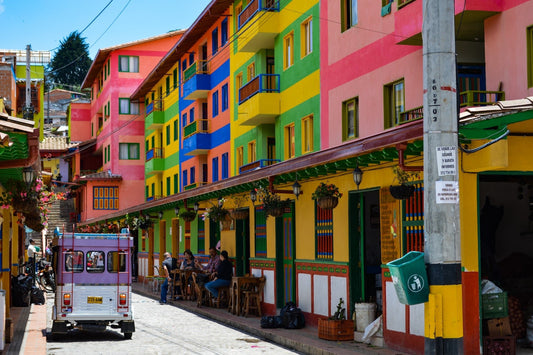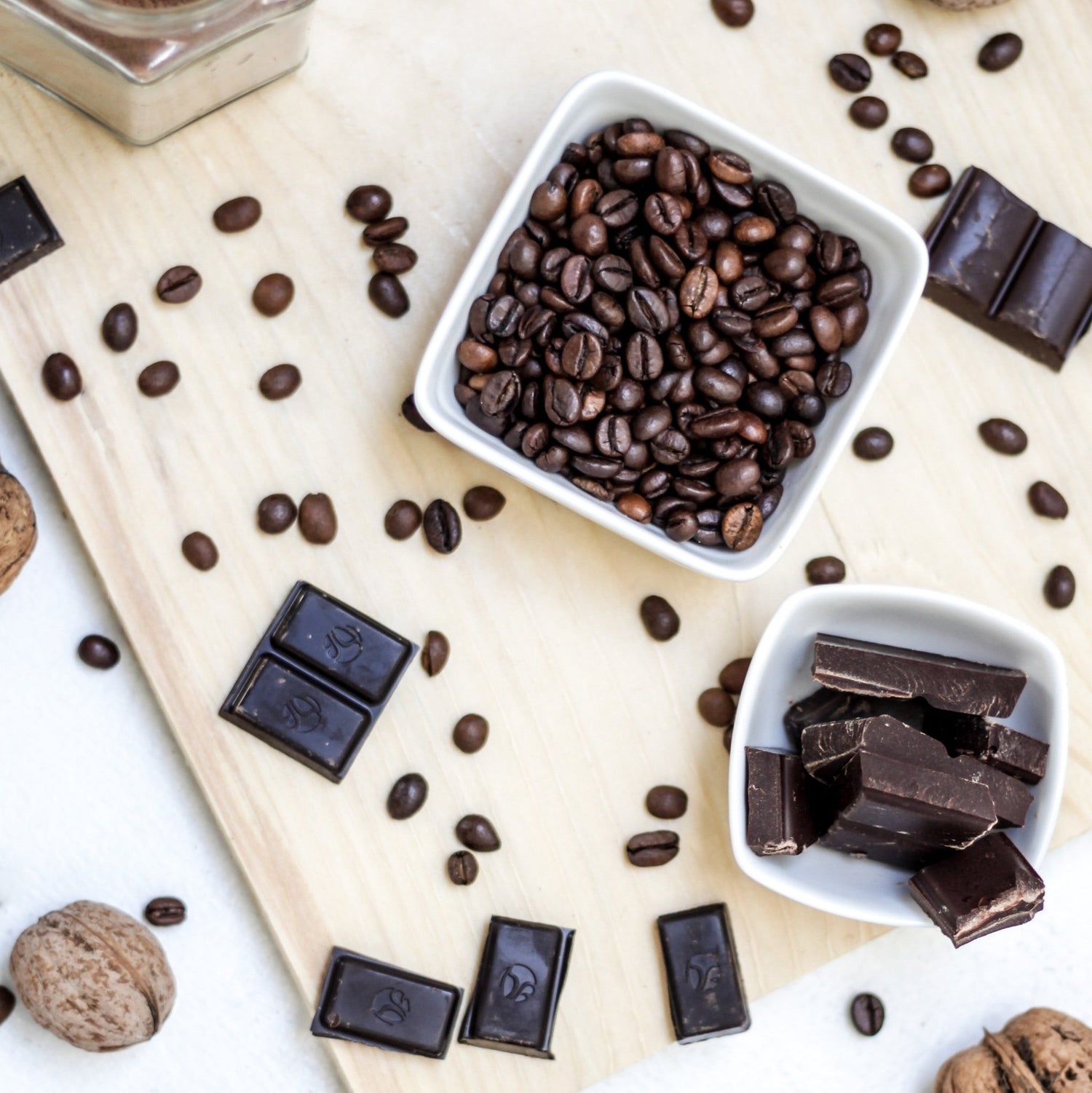Do you want to try something new and different in the world of coffee? Take a look at honey processed coffee. This novel method of coffee bean processing yields a cup that is sweet, full-bodied, and bursting with distinct fruit and floral flavors. Honey processed coffee, as opposed to traditional washed coffee, uses the mucilage surrounding the bean, creating a one-of-a-kind taste experience. Honey processed coffee is a must-try whether you're a seasoned coffee drinker or just getting started in the world of specialty coffee. Continue reading to find out what makes honey processed coffee so unique.
Honey processed coffee is a method of processing coffee beans that results in a distinct flavor profile. The term "honey processed" refers to the sticky, honey-like consistency of the mucilage (the layer surrounding the coffee bean) during the manufacturing process. The name is only used to describe the mucilage's texture; there is actually no honey in the coffee. Honey processed coffee has a sweet and full-bodied texture with notes of fruit and floral flavors.

Where does honey processed coffee come from?
The origins of honey processed coffee can be traced back to Central America, specifically Costa Rica, Honduras, and Nicaragua. Coffee farmers in these countries were looking for a way to process coffee that used less water than traditional washed coffee because water resources were limited.
They discovered that by leaving the mucilage (sticky layer) on the bean and allowing it to dry, they could produce a sweet coffee with a distinct flavor profile.
How is honey processed coffee made?
Honey processed coffee is created by selecting ripe coffee cherries, depulping them while keeping the mucilage intact, and drying to create a distinct, sweet flavor profile.
The following is a step-by-step guide for making honey processed coffee:
1. Selecting only red, ripe coffee cherries. The first step in producing honey-processed coffee is to select only red, ripe coffee cherries. This guarantees that the coffee has the best flavor and sweetness.

2. Float or sink sorting. The cherries are then sorted using the float or sink method. This separates the ripe cherries from the underripe or overripe cherries. Floating cherries are undesirable and should be discarded.
3. Depulping. The cherries are then depulped in order to remove the outer fruit layer, leaving only the mucilage (sticky layer) on the bean.
4. Choosing between yellow, red, and black honey processed beans. The next step is to choose the type of honey processed coffee to make based on the amount of mucilage left on the bean. Honey processed coffee comes in three varieties: yellow, red, and black. Yellow honey processed coffee contains approximately 25% mucilage, red honey processed coffee contains approximately 50% mucilage, and black honey processed coffee contains up to 100% mucilage.
5. Manual drying. The beans are then spread out to dry in a single layer. The temperature and length of the drying process will differ depending on the type of honey processed coffee being produced:
• Yellow honey processed coffee is dried for 4-7 days at a temperature of 38-40°C (100-104°F).
• Red honey processed coffee is dried for 7-10 days at a temperature of 35-38°C (95-100°F).
• Black honey processed coffee is dried for 10-15 days at temperatures ranging from 30-35°C (86-95°F).
6. Hulling. After drying, the mucilage is removed, revealing the coffee bean. This is referred to as hulling.
7. Second drying. The beans are then spread out to dry again to ensure they are completely dry before being packaged and sold, usually to international moisture standards of less than 12%.

Why is honey processed coffee made?
Honey processed coffee taps into a new market for coffee growers by offering a coffee that is both sweet and low in acidity. It is also sustainable and can be made in a large range of styles and roasts, catering to a large demographic of coffee drinkers.
Honey processed coffee is a distinct and flavorful alternative to traditional coffee processing methods. It can be made in a variety of styles ranging from light to dark. Aside from its flavor, honey processed coffee has several other advantages. For one, it uses less water than washed coffee, making it a more environmentally friendly option. Additionally, because the entire coffee cherry is used, it provides farmers with a new, high-value product, increasing their income and reducing waste. Finally, honey processed coffee has a lower acidity level, which makes it easier for some people to drink. All of these factors combine to make honey processed coffee an appealing option for coffee drinkers seeking a distinct and flavorful coffee experience.What does honey processed coffee taste like?
The taste of honey processed coffee varies according to the type of bean and the degree of mucilage removal. Typically, it is known for its sweet, full-bodied flavor with notes of fruit and floral flavors, as well as its low acidity.
The flavor profile of yellow honey processed coffee is light and bright, with a sweet and fruity taste. It has a milder acidity and a clean finish than other coffee processing methods.
The body of red honey processed coffee is medium, with a balanced sweetness and acidity. It has a slightly stronger flavor profile than yellow honey processed coffee, with berry and dark chocolate notes, but less acidity.
The flavor profile of black honey processed coffee is known for being rich and dark. It has a full body and flavors of dark chocolate, caramel, and fruit. Black honey processed coffee has the lowest acidity and the smoothest, syrupy mouthfeel of the three.
The amount of remaining mucilage on the beans determines the sweetness, acidity, and body of the finished product, which in turn influences how honey processed coffee tastes. More mucilage retention results in a sweeter, fuller-bodied flavor, whereas more mucilage removal results in a lighter, brighter flavor profile.

Where is honey processed coffee made?
Honey processed coffee is produced in a number of countries worldwide, including Central and South America, Africa, and Asia. Other countries where honey processed coffee is produced vary, but the method has gained popularity in areas where coffee is a major crop and maintaining a quality water supply is difficult, such as Colombia, Honduras, and Ethiopia.
These regions produce honey processed coffee for a variety of reasons. For starters, coffee farmers in these areas are looking for alternative processing methods that will result in a unique and high-value product. Second, honey processing uses less water than other methods of coffee processing, making it a more environmentally friendly option in areas with limited water resources. Finally, honey processed coffee can be produced in a variety of styles, ranging from light to dark, allowing for the creation of a wide range of flavor profiles, making it a versatile option for coffee drinkers. All of these factors have contributed to the growth and popularity of honey processed coffee in these regions.

How does honey processed coffee compare to washed/wet and natural/dry processed coffee?
Honey Processed coffee falls between washed and dry coffee processing in taste. It is less acidic than washed coffee but sweeter and fruitier than dry processed coffee and it offers a wide spectrum of taste depending on the extent of processing.
The most common processing method is washed or wet processed coffee, which involves removing the outer pulp and mucilage from the coffee beans before drying them using water. As a result, the flavor profile is clean, bright, and acidic, with a high level of clarity. The flavor of washed coffee varies depending on its origin, roast level, and brewing method.
Natural processed coffee, also known as dry processed coffee, is made by allowing the outer pulp and mucilage on coffee beans to dry alongside the beans. As a result, the flavor profile is sweet and fruity, with a low acidity and a heavy body. Natural processed coffee has a stronger flavor profile than washed coffee and is frequently used in the preparation of blends or espresso.
Honey processed coffee falls somewhere in the middle of these two processing methods. It has a distinct flavor profile, a medium body, and a well-balanced sweetness and acidity. Honey processed coffee is also less acidic than washed coffee and has a sweeter, fruitier flavor than natural processed coffee. Honey processed coffee has a distinct flavor profile that varies depending on the degree of mucilage removal and the type of bean used, but it is well-known for its versatility and sweetness.










